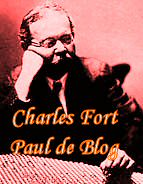Monday, January 24, 2005
Desperately hoping to catch a Tasmanian Tiger
John Flinn
San Francisco Chronicle - Sunday, January 23, 2005
"Like so many of the wonderfully strange beasts in Australia, the Tasmanian tiger looked like it was cobbled together from spare parts. Its rear half resembled a tiger -- well, sort of -- with black stripes and a long tail. Its front half could be mistaken for a wolf. And it had a pouch, like a kangaroo.?

SHORT SMALL MOVIE:
The Last Tiger
www.tased.edu.au/tot/fauna/tiger.mov
"What are they going to do?" said Nick Mooney, a wildlife biologist with the state of Tasmania. "Spend $80 million cloning a thylacine and then turn it loose in the wild?"
For two decades it's been part of Mooney's job to hunt for the Tasmanian tiger. He's laid out wet sand in likely habitats to try to capture footprints, set photographic trip-lines, questioned ranchers and hunters, and examined more scat than he cares to think about. And he frequently crosses paths with amateur thylacine hunters who've devoted their life to the cause.
"People bankrupt themselves and ruin relationships over this," he told me. "I don't know of any suicides, but I know of a number of people who've flipped. It's an obsession for some people."
Mooney said he's seen "a lot of so-called evidence, but nothing convincing. It's always possible the thylacine's still out there, but I'd say it's highly unlikely."
http://sfgate.com/cgi-bin/article.cgi?file=/c/a/2005/01/23/TRGN0ASVI91.DTL
|
John Flinn
San Francisco Chronicle - Sunday, January 23, 2005
"Like so many of the wonderfully strange beasts in Australia, the Tasmanian tiger looked like it was cobbled together from spare parts. Its rear half resembled a tiger -- well, sort of -- with black stripes and a long tail. Its front half could be mistaken for a wolf. And it had a pouch, like a kangaroo.?

SHORT SMALL MOVIE:
The Last Tiger
www.tased.edu.au/tot/fauna/tiger.mov
"What are they going to do?" said Nick Mooney, a wildlife biologist with the state of Tasmania. "Spend $80 million cloning a thylacine and then turn it loose in the wild?"
For two decades it's been part of Mooney's job to hunt for the Tasmanian tiger. He's laid out wet sand in likely habitats to try to capture footprints, set photographic trip-lines, questioned ranchers and hunters, and examined more scat than he cares to think about. And he frequently crosses paths with amateur thylacine hunters who've devoted their life to the cause.
"People bankrupt themselves and ruin relationships over this," he told me. "I don't know of any suicides, but I know of a number of people who've flipped. It's an obsession for some people."
Mooney said he's seen "a lot of so-called evidence, but nothing convincing. It's always possible the thylacine's still out there, but I'd say it's highly unlikely."
http://sfgate.com/cgi-bin/article.cgi?file=/c/a/2005/01/23/TRGN0ASVI91.DTL
|

